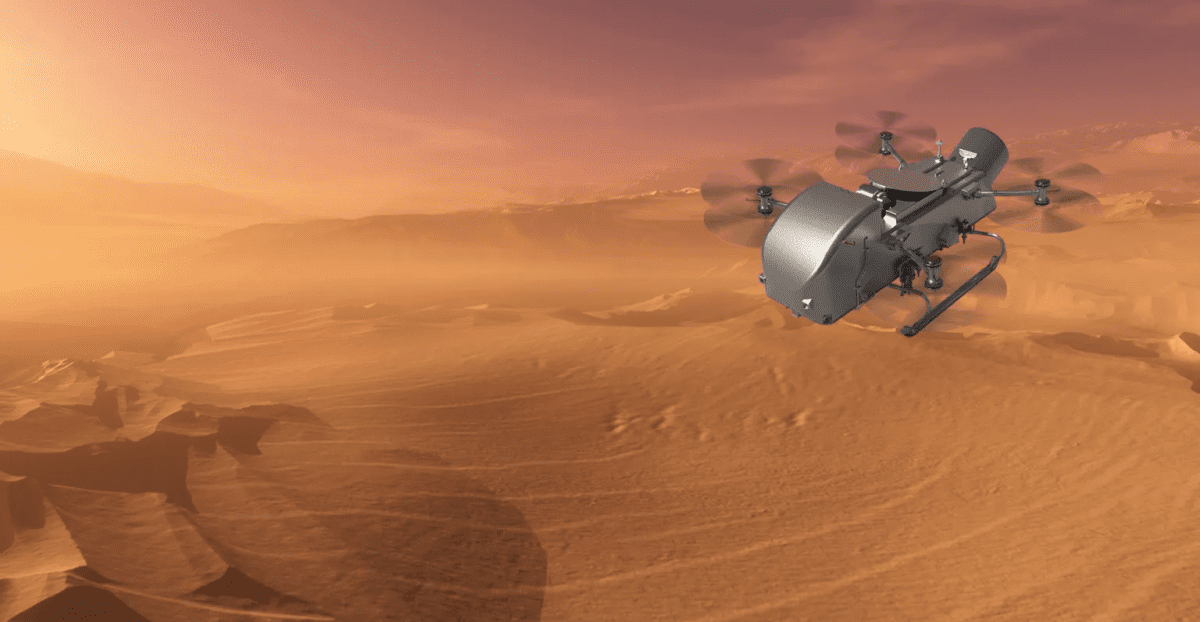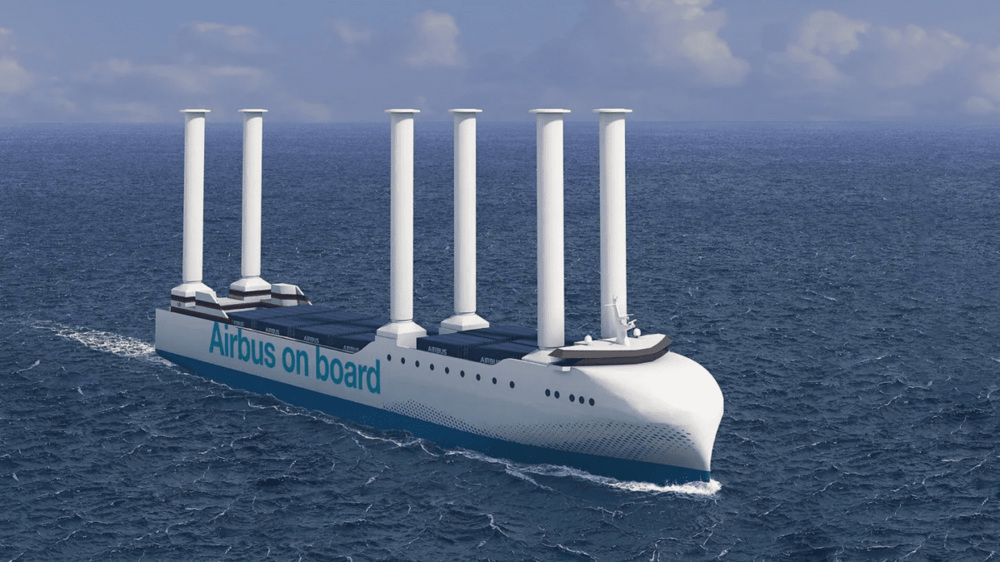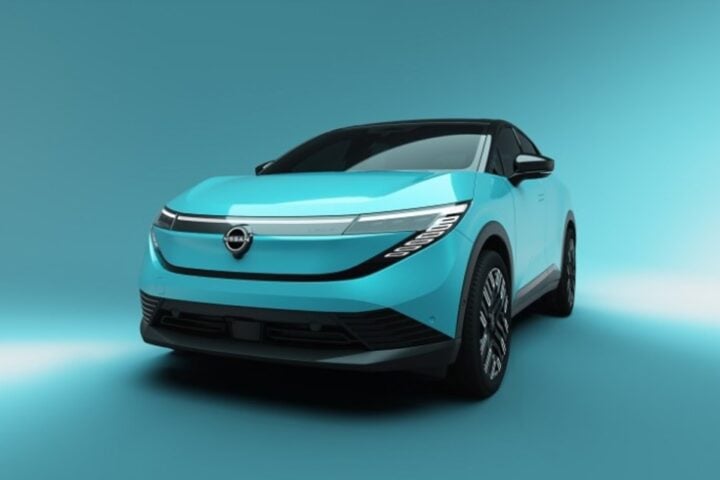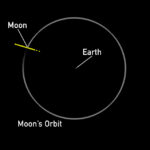NASA’s ambitious Dragonfly mission is set to embark on an unparalleled quest for Saturn’s largest moon, Titan. This mission, unlike any other, aims to uncover the unique and richly organic world of Titan, advancing our understanding of the building blocks of life.
Currently, NASA Langley’s 14-by-22-foot Subsonic Tunnel is at the heart of Dragonfly’s preparation. This facility has been instrumental in testing the rotorcraft’s aerodynamic capabilities. In an environment that mimics Titan’s dense atmosphere, the Dragonfly team has been able to assess the vehicle’s flight dynamics. “The heavy gas environment in the TDT has a density three-and-a-half times higher than air while operating at sea level ambient pressure and temperature,”” says Ken Hibbard, Dragonfly mission systems engineer at APL.
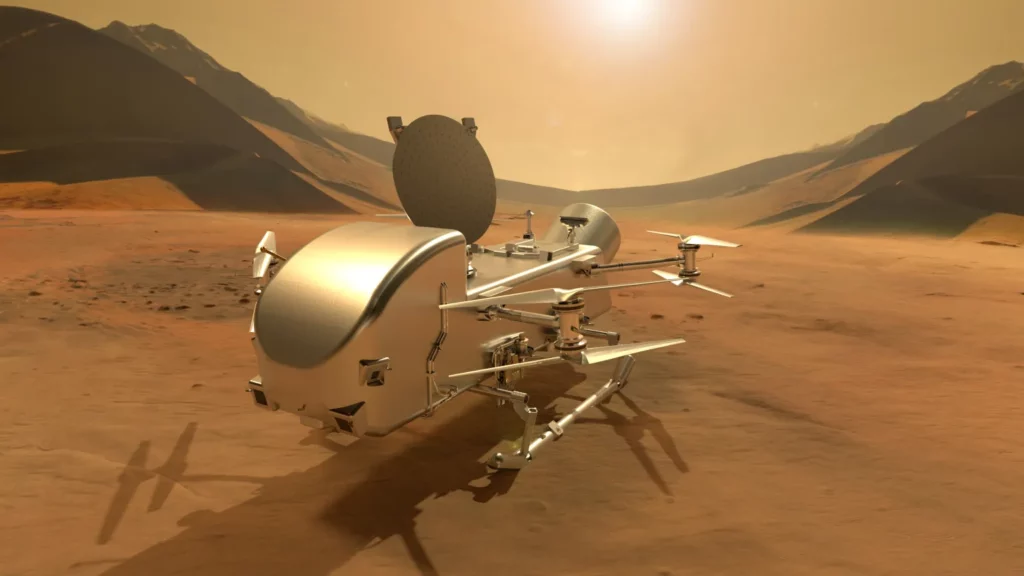
“We tested conditions across the expected flight envelope at a variety of wind speeds, rotor speeds, and flight angles to assess the aerodynamic performance of the vehicle,” test lead Bernadine Juliano of APL said. “We completed more than 700 total runs, encompassing over 4,000 individual data points. All test objectives were successfully accomplished, and the data will help increase confidence in our simulation models on Earth before extrapolating to Titan conditions.”
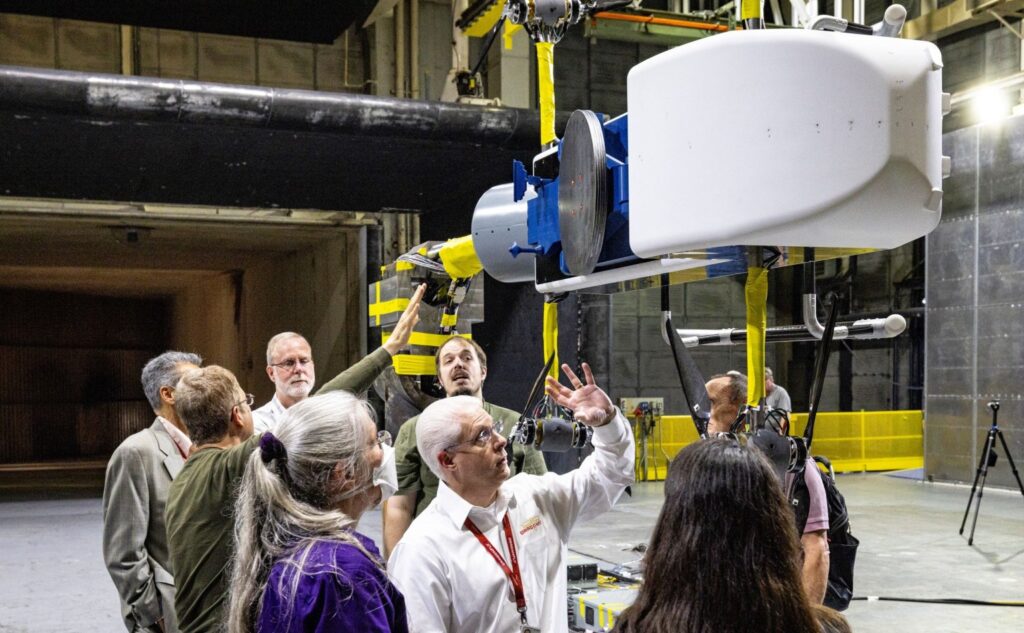
Scheduled to partly launch in 2027, Dragonfly isn’t your usual spacecraft. It’s a rotorcraft designed to fly like a large drone, leveraging Titan’s dense atmosphere, which is four times denser than Earth’s. This design allows Dragonfly to transport its entire scientific payload to various locations on Titan, offering repeatable and targeted access to surface materials.
Similar Posts
Why Titan? For starters, Titan is the only moon in our solar system with a thick atmosphere. This atmosphere, primarily composed of nitrogen, is four times denser than Earth’s. Such density, combined with Titan’s low gravity and frigid temperatures, presents an ideal setting for Dragonfly’s aerial exploration. The rotorcraft is expected to cover over 100 miles during its mission, a feat unparalleled by any other extraterrestrial vehicle.
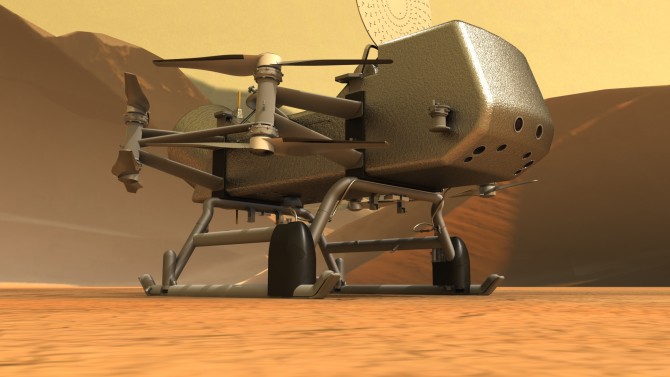
Moreover, Titan’s atmosphere shares striking similarities with early Earth. The presence of methane and the absence of oxygen mirror conditions that might have existed on our planet billions of years ago. “Could Titan look a lot like Earth did billions of years ago? Scientists think so,” says Lonnie Shekhtman, a senior science writer at NASA’s Goddard Space Flight Center.
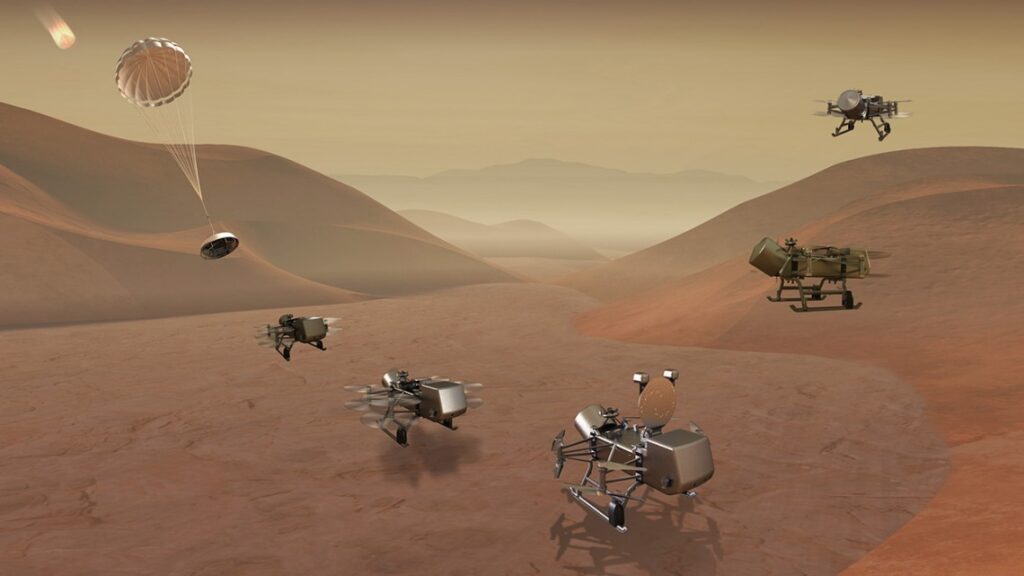
This moon is an intriguing analog to early Earth and holds clues to how life might have originated on our planet. Throughout its mission, the mission’s instruments will delve deep into understanding how far prebiotic chemistry might have progressed on Titan. They will also probe the moon’s atmospheric and surface properties, its subsurface ocean, and liquid reservoirs, searching for chemical evidence of past or extant life.
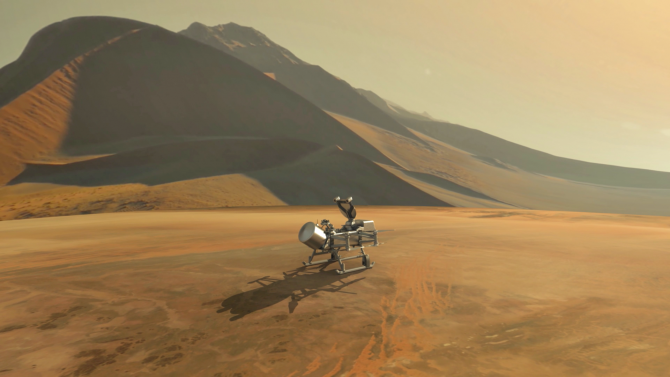
NASA Administrator Jim Bridenstine remarked, “Visiting this mysterious ocean world could revolutionize what we know about life in the universe. This cutting-edge mission would have been unthinkable even just a few years ago, but we’re now ready for Dragonfly’s amazing flight.”
The mission’s landing site mostly might be the equatorial “Shangri-La” dune fields, reminiscent of the linear dunes in Namibia, Africa. From there, Dragonfly will embark on a series of flights, eventually reaching the Selk impact crater, a location believed to have the essential ingredients for life: liquid water, organics, and energy.
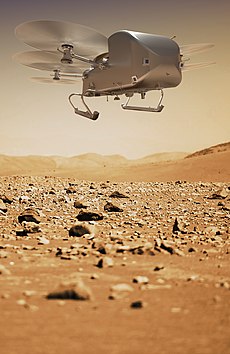
Thomas Zurbuchen, NASA’s associate administrator for Science, expressed his excitement, stating, “It’s remarkable to think of this rotorcraft flying miles and miles across the organic sand dunes of Saturn’s largest moon, exploring the processes that shape this extraordinary environment.”
But what makes Titan so special? Here are five reasons:
- Thick Atmosphere: Titan is the only moon in our solar system with a dense atmosphere.
- Earth-like Atmosphere: Its atmosphere, primarily nitrogen, is more akin to Earth’s than any other celestial body.
- Complex Chemistry: Titan’s atmosphere fosters a web of organic chemistry, producing compounds that are building blocks of life on Earth.
- Natural Laboratory: Titan offers a real-time science experiment, showcasing prebiotic chemistry that can’t be replicated in labs on Earth.
- Earthly Resemblance with Twists: While Titan’s terrain mirrors Earth’s, every familiar feature has an exotic twist, from dunes made of hydrocarbon grains to rivers and lakes of methane.
As Dragonfly prepares for its journey, the scientific community and space enthusiasts alike await the revelations this mission might bring. Will Titan offer insights into the origins of life? Only time will tell. But one thing is certain: Dragonfly’s exploration of Titan promises to be a monumental chapter in space exploration.
